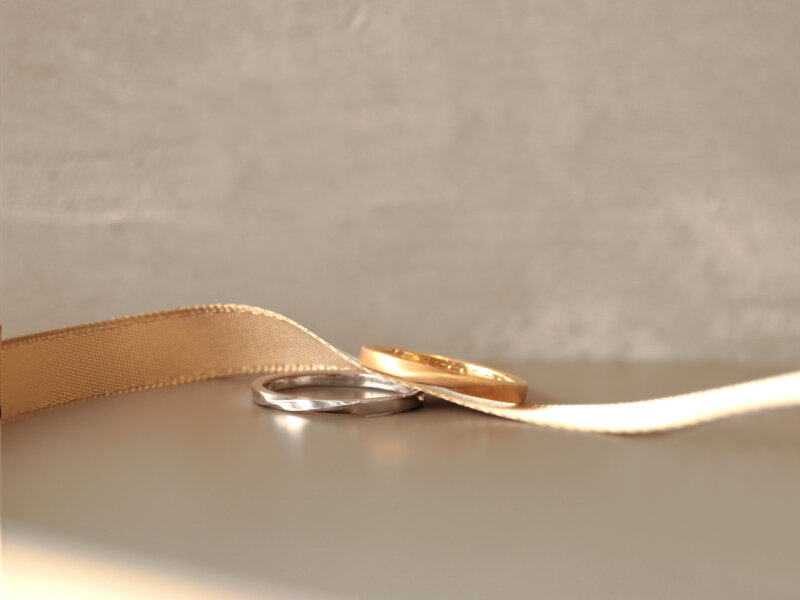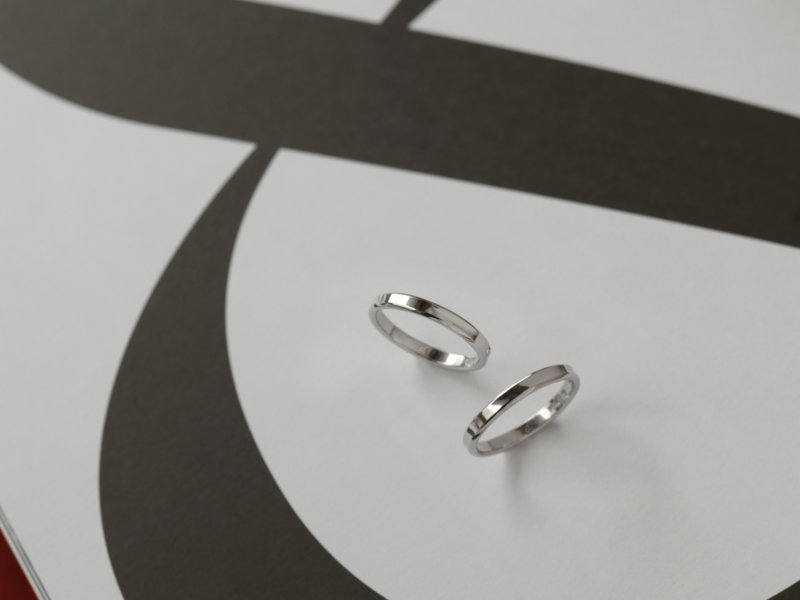Silver-colored jewelry may be made of white gold or platinum.
White gold sold as accessories is often palladium plated and therefore looks very similar.
However, since they are different metals to begin with, there are many differences, and white gold without palladium plating looks very different from platinum.
This article describes the differences between white gold and platinum.
Difference as a metal
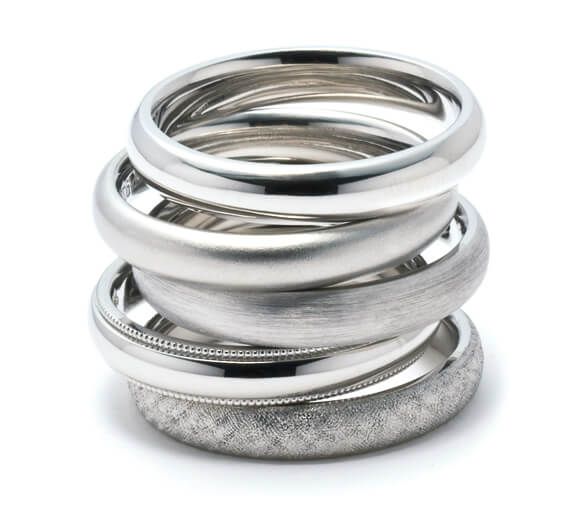
What is White Gold?
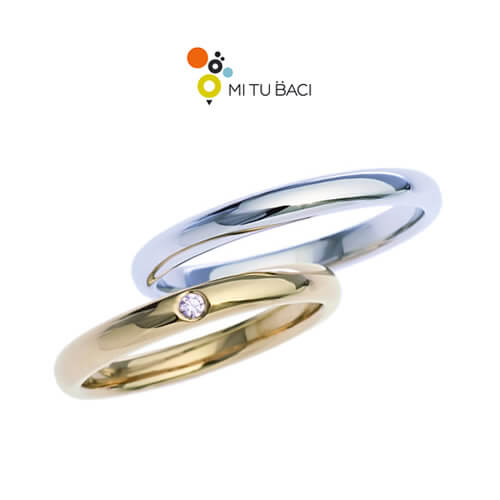
There is no metal with the name "white gold". The term "white gold" is used to refer to alloys that are primarily gold with a silver color. The most common white gold used for wedding rings is K18 white gold. K14 white gold is also available, although it is not often used for wedding rings.
K18 white gold is 18/24, meaning that 75% of the total is pure gold and the rest contains different metals.
Pure platinum and pure gold are not used because both are soft, difficult to process, and easily scratched when not mixed with other metals. By combining them with other metals, they become stronger. Different metals are also added to change the color. For example, MITUBACI's popular champagne gold is made by mixing silver, copper, and palladium to produce its gentle color.
What is Platinum?
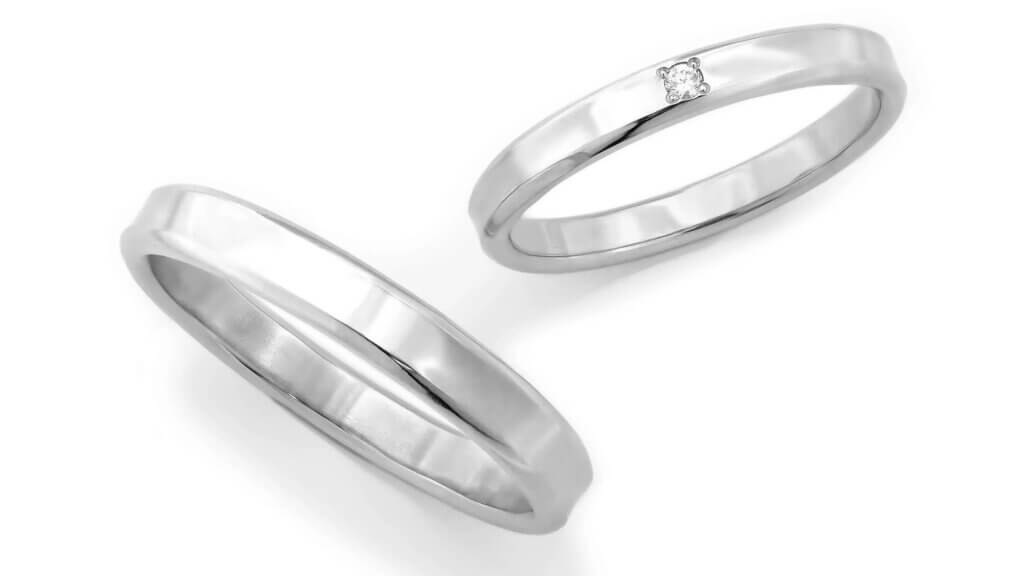
Platinum as a metal is a rare precious metal represented by the element symbol Pt. Platinum used in jewelry is often an alloy called Pt950 platinum or Pt900 platinum.
This means that 95%/90% of the total is pure platinum and the rest contains different metals.
Platinum and white gold breakage
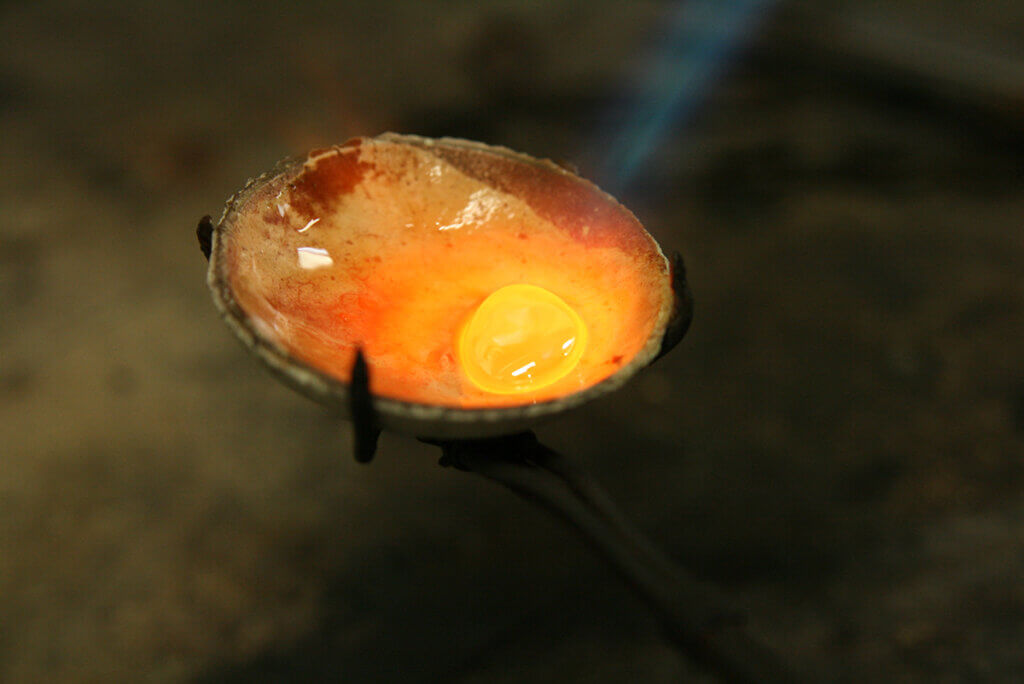
Metals that are mixed with the main metal to add strength or color are called "wari-gane.
White gold is split by silver or palladium, which gives the metal its silver color.
The breakdown of the Pt950 platinum used in MITUBACI's handmade wedding rings is copper and palladium.
The type and percentage of metal used for the split gold varies slightly from store to store and brand to brand.
Differences as Jewelry
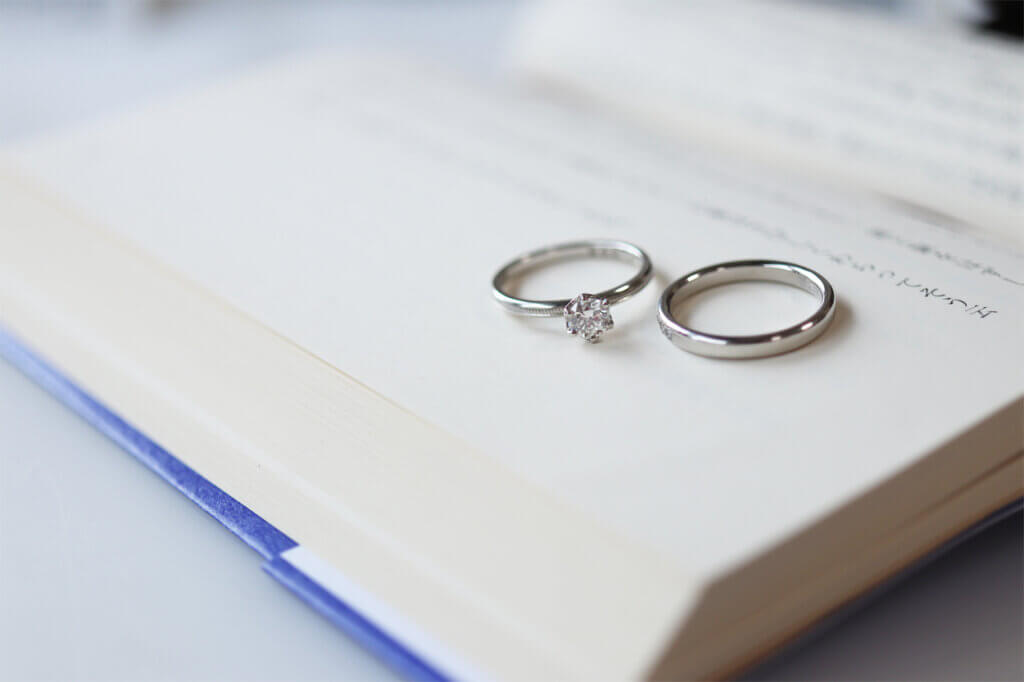
Difference in color, white gold is blackish and looks cooler.
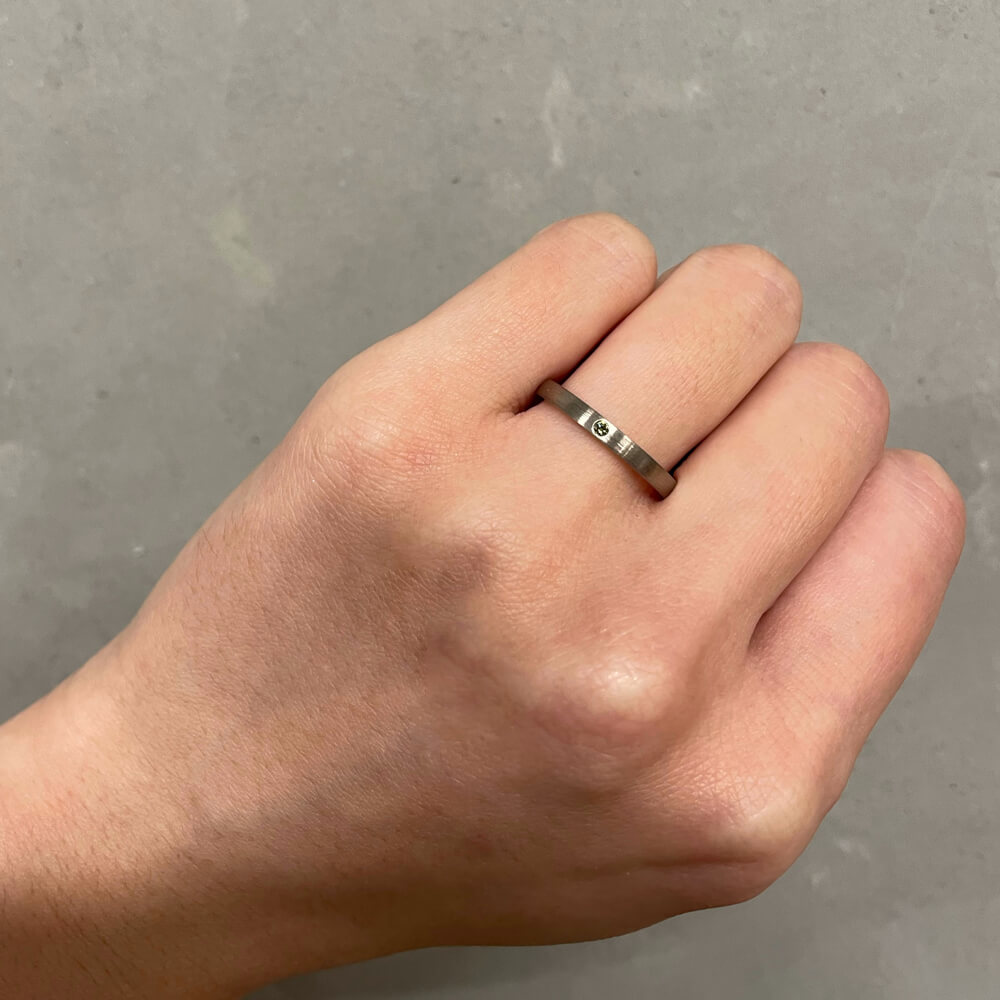
As mentioned at the beginning of this article, white gold sold as accessories is often palladium plated and therefore looks very similar.
If they are not palladium plated, there is a significant difference when they are placed side by side.
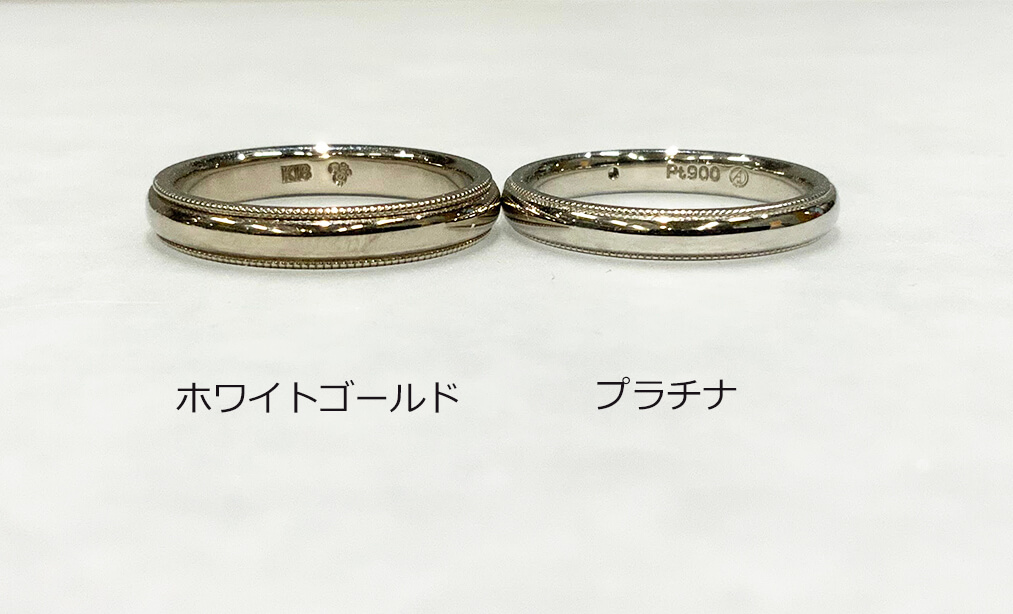
Platinum is whiter in color and white gold is darker in tone.
Platinum is also called platinum, and as the name implies, it is white.
White gold is similar to silver and has a cool look.
It depends on your preference rather than which is better.
Difference when processing / white gold is more difficult
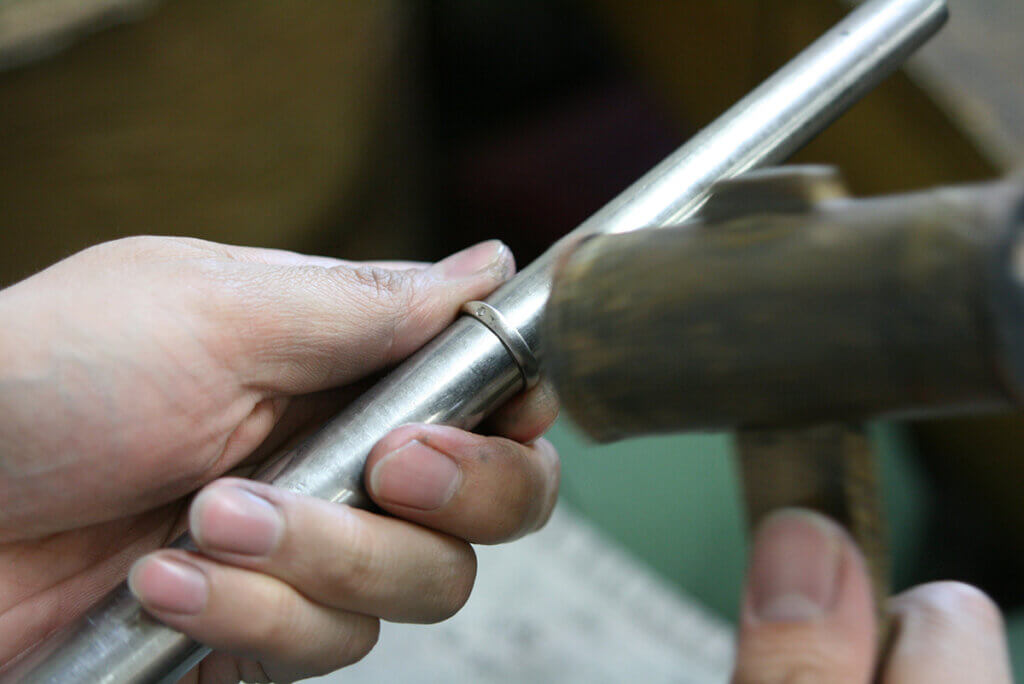
Some of the workshops where you can experience handmade wedding rings can produce them in white gold, but MITUBACI does not offer this service.
MITUBACI used to sell white gold rings, but due to the difficulty in handling them during production, we stopped selling them as we transitioned to a workshop-based brand.
Because MITUBACI asks the customer to take the initiative in most parts of the wedding ring production, we have given up dealing with white gold, which is difficult to handle. If you insist on white gold, we may be able to accommodate you with our artisan tailored wedding rings, so please inquire.
For more information about artisan tailored wedding rings, please see this page.
Difference in specific gravity; platinum is heavier than white gold
Platinum is heavier than white gold. However, since rings are very small, weighing only a few grams, differences in width, etc. will affect the weight more than differences in metal.
Easiness of discoloration, don't worry about it
Both white gold and platinum are precious metals and will rarely tarnish.
If discoloration occurs, it can easily be restored to its original beauty by re-polishing or ion washing.
Easiness to scratch, no difference between white gold and platinum
The ease of scratching is almost the same. When physically tested, platinum is a slightly more scratch-resistant material, but for everyday use, there is not that much difference.
So, we hope you will not worry too much about discoloration or scratches.
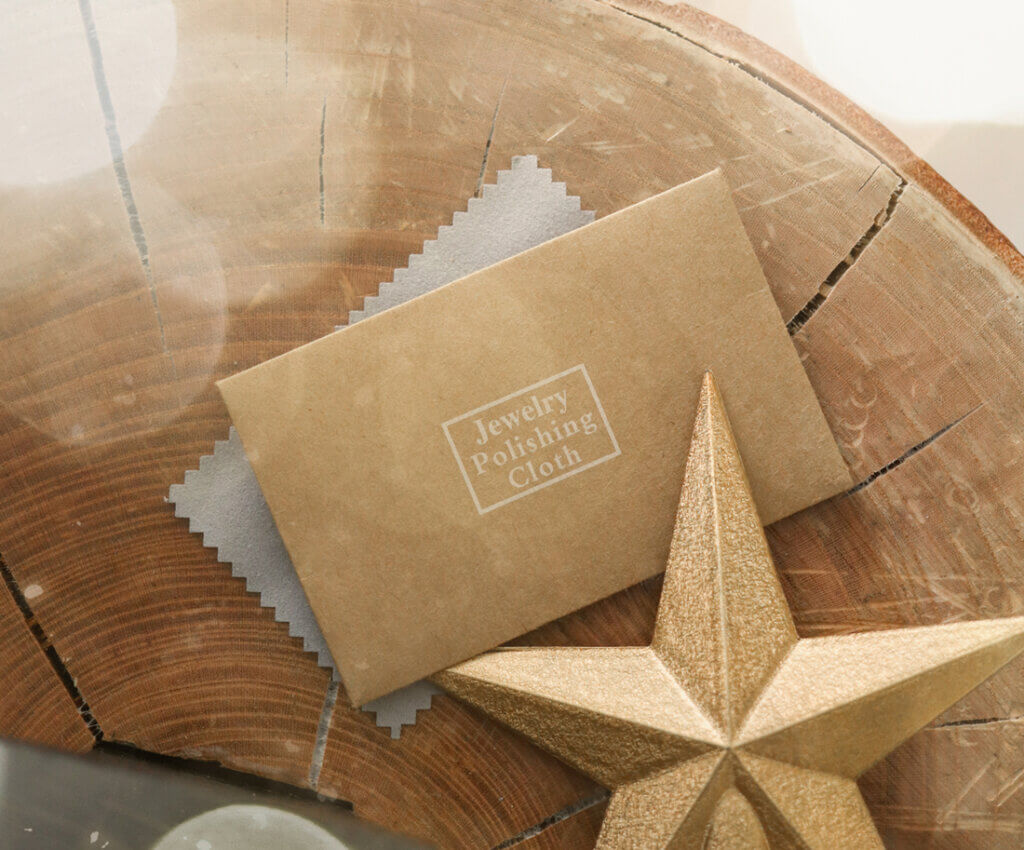
About Metal Allergy

Platinum and gold are relatively hypoallergenic metals, but there are still people with metal allergies.
In the case of MITUBACI, if you are allergic to palladium, we do not recommend either platinum or white gold. Instead, we recommend yellow gold or other palladium-free materials.
For those who are allergic to silver, we recommend platinum, which does not contain silver, because silver is used as the alloy for white gold.
For more information on metal allergies, please see this page.
We introduced the difference between white gold and platinum.
If you have any questions, feel free to contact us at contact@mitubaci.jp!



